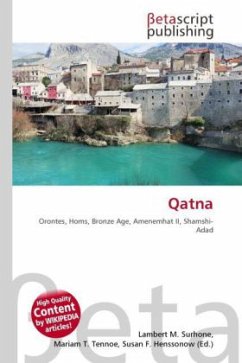High Quality Content by WIKIPEDIA articles! Qatna (Arabic , modern Tell el-Mishrife, Arabic ) is an archaeological site in the Wadi il-Aswad, a tributary of the Orontes, 18 km northeast of Homs, Syria. It consists in a tell occupying 1 km², which makes it one of the largest Bronze Age towns in western Syria. The tell is located at the edge of the limestone-plateau of the Syrian desert towards the fertile Homs-Bassin. The first finds at Qatna date to the mid- to late 3rd millennium BC, although this early period is not well represented. The find of a 12th Dynasty Egyptian sphinx belonging to Princess Ita, daughter of Amenemhat II (1875 1840 BC) shows early Egyptian influence, although it is not clear at what time the sphinx got to Qatna (the sphinx was found within the debris of the Late Bronze Age palace). The first king of Qatna (Qatanum) known by name from the Mari archives is Ishi-Adad (Haddad or Adad is my help), an Amurru or "Amorite".
Bitte wählen Sie Ihr Anliegen aus.
Rechnungen
Retourenschein anfordern
Bestellstatus
Storno








